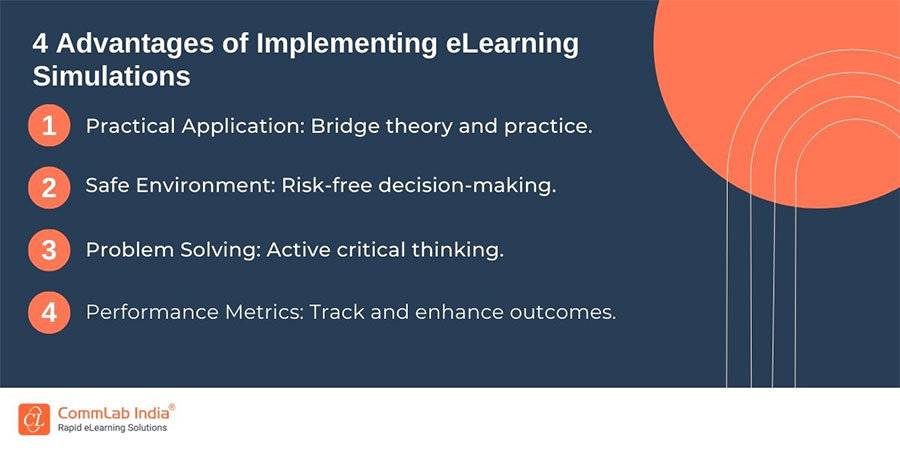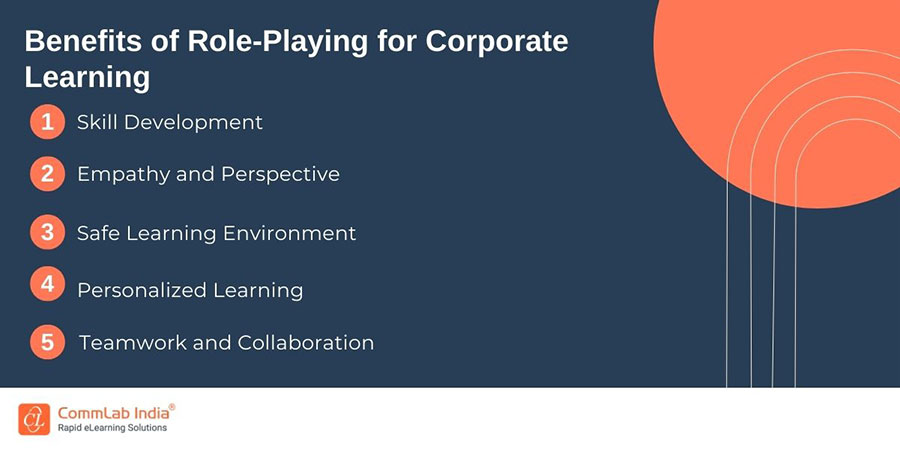How to Engage New Hires During Compliance Training? [Revealed]
![How to Engage New Hires During Compliance Training? [Revealed] How to Engage New Hires During Compliance Training? [Revealed]](https://blog.commlabindia.com/hubfs/blogs/compliance-training-training-new-employees-engagement.jpg)
Compliance training. Often dreaded by both employees and trainers alike, it can feel like a tedious box-checking exercise. But what if there was a way to make compliance training engaging, informative, and even enjoyable for new hires?
Employee Engagement is Key to Successful Compliance Training.
It helps employees -
- Retain information: Understand and remember key regulations and policies.
- Apply their knowledge: Make informed decisions and avoid compliance risks.
- Embrace compliance culture: Foster a positive attitude towards compliance within the organization.
Engaged new hires are not only more likely to retain crucial information but also develop a positive attitude towards compliance, fostering a safer and more ethical work environment. This blog explores 7 foolproof ways to transform compliance training from a chore to a cornerstone of a successful onboarding experience.
How to Engage New Hires During Compliance Training? [7 Foolproof Ways]
1. Ditch the Lecture Format, Embrace Interactive Learning
New hires are bombarded with information during onboarding. Sitting through long lectures on compliance policies is a recipe for disengagement. Instead, embrace interactive learning methods that encourage active participation and knowledge retention:
Scenario-Based Learning: Present real-world scenarios where new hires can apply their understanding of compliance policies and make ethical decisions. This fosters critical thinking and problem-solving skills.
Gamification: Incorporate gamification elements like points, badges, and leaderboards to keep new hires motivated and engaged.
Interactive Simulations: Immerse new hires in realistic simulations that allow them to practice applying compliance knowledge in a safe, virtual environment.

Microlearning: Break down compliance topics into bite-sized, easily digestible microlearning modules that can be completed at the new hire's own pace.
Why is Microlearning Effective for Training? [Watch Now]
2. Make it Personal and Relevant
Compliance training shouldn't feel generic and detached from actual job roles. Connect compliance to the new hire's specific role and responsibilities. Explain how it directly impacts their daily tasks and how adhering to compliance protects them, their colleagues, and the organization.
Case Studies: Utilize real-life case studies or examples relevant to the new hire's industry or department. This demonstrates the potential consequences of non-compliance and the importance of adherence.
Role-Playing Activities: Engage new hires in role-playing activities where they can practice applying compliance policies in real-world situations relevant to their roles. This fosters confidence and practical application of knowledge.

3. Leverage Technology and Multimedia
Today's generation thrives on technology and visual learning. Incorporate multimedia elements to create a more engaging experience:
Interactive Videos: Utilize interactive videos with embedded quizzes or branching storylines that adapt to the new hire's choices, keeping them actively involved.
Podcasts and Audio Recordings: Provide options for on-the-go learning through podcasts or audio recordings that allow new hires to absorb information while commuting or completing other tasks. Here's podcast to follow and take guidance from: Here is the link to access this week podcast: Rapid eLearning and 4Rs for Effective Corporate Training.
Animations and Infographics: Use visually appealing animations and infographics to make complex topics easier to understand and retain information. Here's an infographic for you to checkout: Download Graphic: Avatar-based Learning 101.
4. Foster Collaboration and Social Learning
Learning doesn't need to be a solitary experience. Encourage collaboration and social learning by incorporating activities that allow new hires to interact with each other and share insights:
Discussion Forums: Create online forums where new hires can discuss compliance topics, ask questions, and learn from each other's perspectives.
Collaborative Activities: Implement group projects or team-based challenges that require new hires to problem-solve and apply their understanding of compliance together.
Online Quizzes and Games: Utilize online quizzes and games with leaderboards to encourage healthy competition and promote social interaction amongst new hires.
→ Download Now: Instructional Design Strategies to Design Engaging eLearning Courses [eBook]
5. Encourage Open Communication and Feedback
Creating a safe space for open communication and feedback is crucial for effective learning. Encourage new hires to ask questions, voice their concerns, and offer suggestions:
Q&A Sessions: Schedule regular Q&A sessions where new hires can address any uncertainties or confusion regarding compliance policies.
Anonymous Feedback Surveys: Collect anonymous feedback from new hires after they complete the training to identify areas for improvement and tailor future training accordingly.
Mentorship Programs: Pair new hires with experienced mentors who can answer questions, provide guidance, and support their understanding of compliance.
6. Celebrate Achievements and Reward Engagement
Recognize and celebrate new hires' achievements in compliance training to reinforce positive behavior and encourage continued engagement:
Certificates of Completion: Award certificates upon successful completion of compliance training modules, fostering a sense of accomplishment.
Public Recognition: Acknowledge and commend new hires who actively participate in discussions, ask insightful questions, or demonstrate exceptional understanding of compliance concepts.
Incentives: Consider offering small incentives or rewards for completing training modules or achieving milestones, fostering motivation and engagement.
7. Make Compliance Training Ongoing and Relevant
Compliance training shouldn't end with employee onboarding. Embed ongoing learning and reinforcement into your company culture:
Compliance Newsletters and Reminders: Regularly send out newsletters or reminders with updates on policies, regulations, and best practices.
Compliance Champions: Identify and empower "compliance champions" within departments who can serve as ongoing resources for their colleagues, answering questions and providing guidance on compliance matters.
Refresher Courses and Updates: Offer periodic refresher courses or updates to keep new hires informed about changes in regulations or policies, ensuring their knowledge remains current and relevant.
And here’s a BONUS section for you -
Compliance Training: Best Practices
- Tailor the training to your company culture and industry. Compliance training that resonates with your company's values and real-world scenarios will be more impactful.
- Involve stakeholders in the training development process. Seek input from HR, legal, SMEs and training professionals to ensure the training is comprehensive, accurate, and aligned with organizational goals.
- Invest in quality training materials and resources. High-quality content is key to engaging new hires and delivering a valuable learning experience.
- Continuously monitor and improve your compliance training program. Regularly assess the effectiveness of your training and make adjustments based on feedback and changing needs.
Summing Up
By implementing these foolproof strategies, you can transform compliance training from a chore to a valuable and engaging experience for new hires. This not only sets them up for success in their roles but also fosters a culture of ethical behavior and compliance within your organization.
Unlock the secrets to engaging eLearning! Download your free eBook and discover proven strategies to:
- Boost learner engagement and retention
- Design interactive and impactful courses
- Deliver exceptional learning experiences





